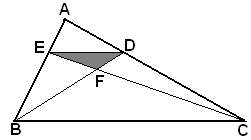Events & Promotions
|
|

GMAT Club Daily Prep
Thank you for using the timer - this advanced tool can estimate your performance and suggest more practice questions. We have subscribed you to Daily Prep Questions via email.
Customized
for You
Track
Your Progress
Practice
Pays
Not interested in getting valuable practice questions and articles delivered to your email? No problem, unsubscribe here.
- Nov 22
11:00 AM IST
-01:00 PM IST
Do RC/MSR passages scare you? e-GMAT is conducting a masterclass to help you learn – Learn effective reading strategies Tackle difficult RC & MSR with confidence Excel in timed test environment - Nov 23
11:00 AM IST
-01:00 PM IST
Attend this free GMAT Algebra Webinar and learn how to master the most challenging Inequalities and Absolute Value problems with ease. - Nov 25
10:00 AM EST
-11:00 AM EST
Prefer video-based learning? The Target Test Prep OnDemand course is a one-of-a-kind video masterclass featuring 400 hours of lecture-style teaching by Scott Woodbury-Stewart, founder of Target Test Prep and one of the most accomplished GMAT instructors.
Originally posted by RaviChandra on 14 Sep 2010, 23:58.
Last edited by Bunuel on 06 May 2020, 08:59, edited 3 times in total.
Last edited by Bunuel on 06 May 2020, 08:59, edited 3 times in total.
Renamed the topic and edited the question.
Kudos
Bookmarks
D
Be sure to select an answer first to save it in the Error Log before revealing the correct answer (OA)!
Difficulty:
 95%
(hard)
95%
(hard)
Question Stats:
35% (02:21) correct 65%
(02:37)
wrong
65%
(02:37)
wrong  based on 232
sessions
based on 232
sessions
History
Date
Time
Result
Not Attempted Yet
ABC is a triangle with area 1. AF = AB/3, BE = BC/3 and ED = FD. Find the area of the shaded figure.
A. 1/3
B. 13/16
C. 5/9
D. 1/2
Attachment:
1.JPG [ 5.35 KiB | Viewed 28497 times ]
Kudos
Bookmarks
In triangle ABC, D and E are points on AC and AB such DE || BC and length of DE is one-third of BC. If the area of triangle ABC is 216 square units, find the area of the shaded triangle.
a. 12
b. 18
c. 24
d. 16

2.PNG [ 2.36 KiB | Viewed 27262 times ]
a. 12
b. 18
c. 24
d. 16
Attachment:
2.PNG [ 2.36 KiB | Viewed 27262 times ]
Kudos
Bookmarks
RaviChandra
Rotate the triangle so that CA to be the base. Now, triangle CDA has the same base as CBA and half of its height ("read" the diagram for explanation), which means that area of CDA will be half of the area of CBA, so 1/2.
Attachment:
7.PNG [ 5.36 KiB | Viewed 26954 times ]
RaviChandra these are not GMAT questions, so I wouldn't worry about them too much and definitely wouldn't spend much time on them.












